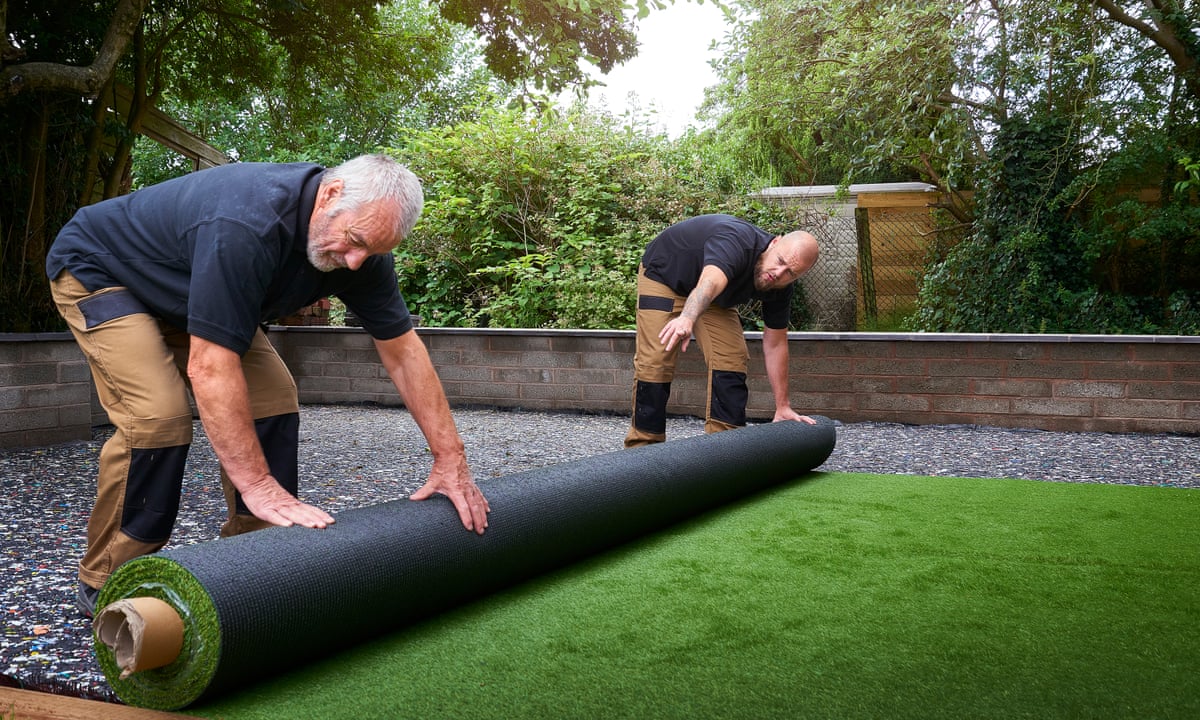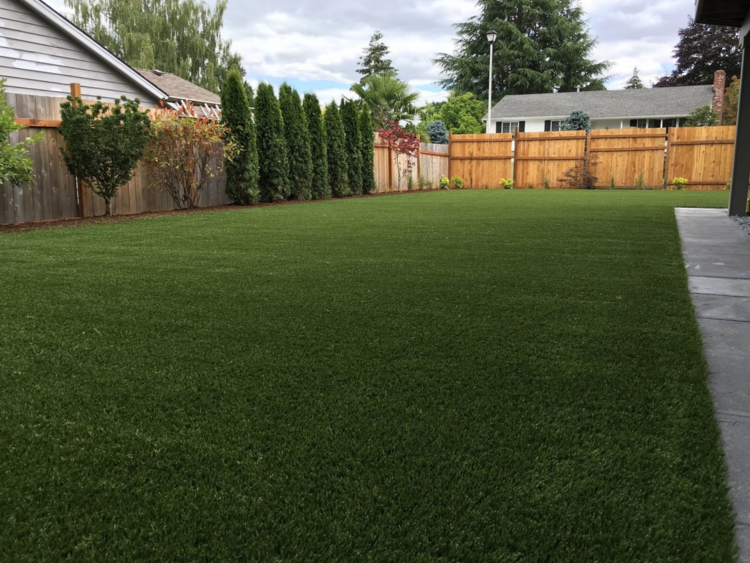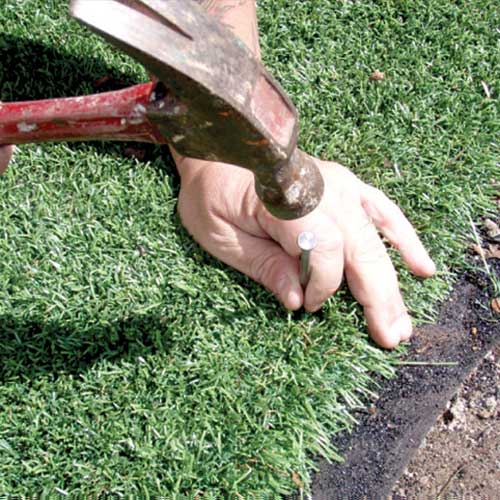See Why Homeowners Prefer Synthetic Grass for Lasting Landscape Design Practices
As house owners significantly focus on sustainability in landscape design, man-made grass has emerged as a compelling alternative to traditional turf. Its ability to conserve water, reduce maintenance initiatives, and decrease ecological effect settings it as a functional option for those seeking environment-friendly options. Moreover, the aesthetic appeal and convenience of synthetic grass cater to diverse layout choices. However, the effects of this change prolong beyond plain ease and aesthetics, motivating a better examination of just how these options influence more comprehensive environmental end results. What continues to be to be checked out is the full scope of advantages that synthetic lawn can provide to homeowners and the setting alike.
Water Conservation Advantages
One of the most substantial benefits of synthetic grass is its role in water preservation. Standard turf yards require considerable quantities of water to keep their lush appearance, usually leading to overuse of regional water sources, specifically in deserts. On the other hand, synthetic grass removes this need totally, as it does not call for watering. This not just preserves water but also decreases the stress on community water systems, especially during drought conditions.
Additionally, the setup of synthetic grass can add to a more sustainable landscape. Property owners can considerably reduce their water expenses, permitting reallocation of resources to other ecological efforts or family uses. Furthermore, synthetic grass is designed to withstand various weather problems without the requirement for extra watering, making it a suitable option for regions facing water deficiency.
The ecological benefits prolong beyond instant water cost savings. By decreasing water consumption, synthetic grass assists to reduce the impacts of environment modification, preserving crucial environments that are threatened by too much water extraction. As sustainable landscape design practices obtain traction, synthetic grass emerges as an accountable choice for home owners seeking to develop green outdoor rooms.
Decreased Upkeep Efforts
Man-made turf substantially reduces upkeep initiatives compared to typical turf yards. With synthetic yard, home owners can remove the lengthy tasks associated with natural landscape design, such as mowing, fertilizing, and weeding. This not only saves useful time but also decreases physical labor, making lawn care available for individuals of every ages.
Traditional lawns require frequent trimming to maintain an aesthetically pleasing elevation, whereas artificial lawn continues to be consistently lavish without the demand for reducing. In addition, homeowners no much longer require to use plant foods or chemicals, which are usually called for to maintain all-natural turf healthy and balanced.
Moreover, fabricated lawn is long lasting and durable, requiring minimal maintenance past periodic brushing and rinsing to remove debris. This ease of upkeep allows home owners to appreciate their outside spaces without the continuous fear of upkeep, providing even more time for recreation and family tasks. Eventually, the decreased upkeep initiatives related to synthetic grass make it an attractive option for those looking for a low-maintenance, visually appealing landscape.

Ecological Impact Reduction
There is a growing recognition of the ecological advantages connected with synthetic lawn, specifically in regards to water preservation and reduced chemical usage. Conventional yards need considerable quantities of water, particularly in drought-prone areas, bring about raised pressure on neighborhood water sources. On the other hand, synthetic grass eliminates the need for watering, significantly decreasing water consumption and promoting sustainability.
Additionally, conventional lawn upkeep usually entails the application of linked here herbicides, fertilizers, and pesticides, which can add to soil and water pollution. Artificial lawn minimizes this ecological risk by requiring minimal maintenance and essentially getting rid of the requirement for hazardous chemicals. This not only boosts dirt health and wellness however also protects neighborhood environments from hazardous runoff.
Moreover, the manufacturing of all-natural grass lawns typically entails making use of fossil fuels for trimming and landscape design equipment, more adding to greenhouse gas discharges. By selecting synthetic lawn, house owners can considerably decrease their carbon impact related to lawn treatment activities.
Aesthetic Allure and Convenience
In addition to its ecological benefits, synthetic grass provides substantial aesthetic charm and versatility for landscape design. Home owners can achieve a rich, environment-friendly look year-round, getting rid of the seasonal changes generally connected with natural turf. This constant visual not just enhances the visual appeal of a residential property yet also adds to a refined and well-kept appearance.
In addition, synthetic grass is readily available in a variety of appearances, designs, and colors, allowing for customization to suit individual preferences and layout motifs - Artificial turf companies phoenix. Whether used in residential gardens, business rooms, or entertainment locations, it can effortlessly integrate right into diverse landscaping designs, from contemporary minimal to lush exotic setups
The convenience of synthetic grass extends past plain look; it can be set up in different locations, including rooftops, outdoor patios, and also interior rooms, creating chances for Learn More Here unique landscaping options. Furthermore, it is suitable for a variety of activities, from children's backyard to pet-friendly atmospheres, providing capability without jeopardizing design.
Eventually, the here aesthetic allure and convenience of man-made turf make it an eye-catching choice for homeowners looking for sustainable landscape design solutions that do not give up charm for ecological responsibility.

Long-Term Expense Cost Savings
One of the most engaging advantages of synthetic grass is its potential for long-term price financial savings. Unlike all-natural lawn, which needs routine maintenance-- including mowing, watering, feeding, and bug control-- man-made turf significantly lowers these recurring expenditures.
Furthermore, synthetic grass has a life-span of 15 to 25 years, depending upon its high quality and usage. This resilience minimizes substitute prices, making it a much more economical selection in the future. The first investment in fabricated grass can often be recovered via the savings built up over time.
While the upfront expense might seem greater contrasted to sod installment, the cumulative cost savings from lowered maintenance and water use often exceed these first expenditures. Eventually, the fostering of synthetic grass not just advertises a sustainable landscape design remedy but likewise supplies homeowners a monetarily wise option that aligns with long-term budgeting objectives.
Verdict
Synthetic grass arises as a compelling option for lasting landscaping, using considerable advantages in water conservation, lowered maintenance initiatives, and diminished environmental impact. Its aesthetic appeal and flexibility boost the aesthetic landscape while straightening with modern sustainability goals. Additionally, long-lasting expense savings contribute to its beauty for house owners. As neighborhoods progressively prioritize eco-friendly practices, the adoption of synthetic grass stands for a dynamic action toward achieving sustainable and resistant landscapes.
Furthermore, artificial lawn is made to stand up to various weather problems without the need for supplemental watering, making it an ideal selection for areas facing water deficiency. (Arizona artificial turf)

Man-made grass emerges as an engaging choice for sustainable landscaping, offering substantial benefits in water conservation, reduced upkeep efforts, and decreased ecological influence.